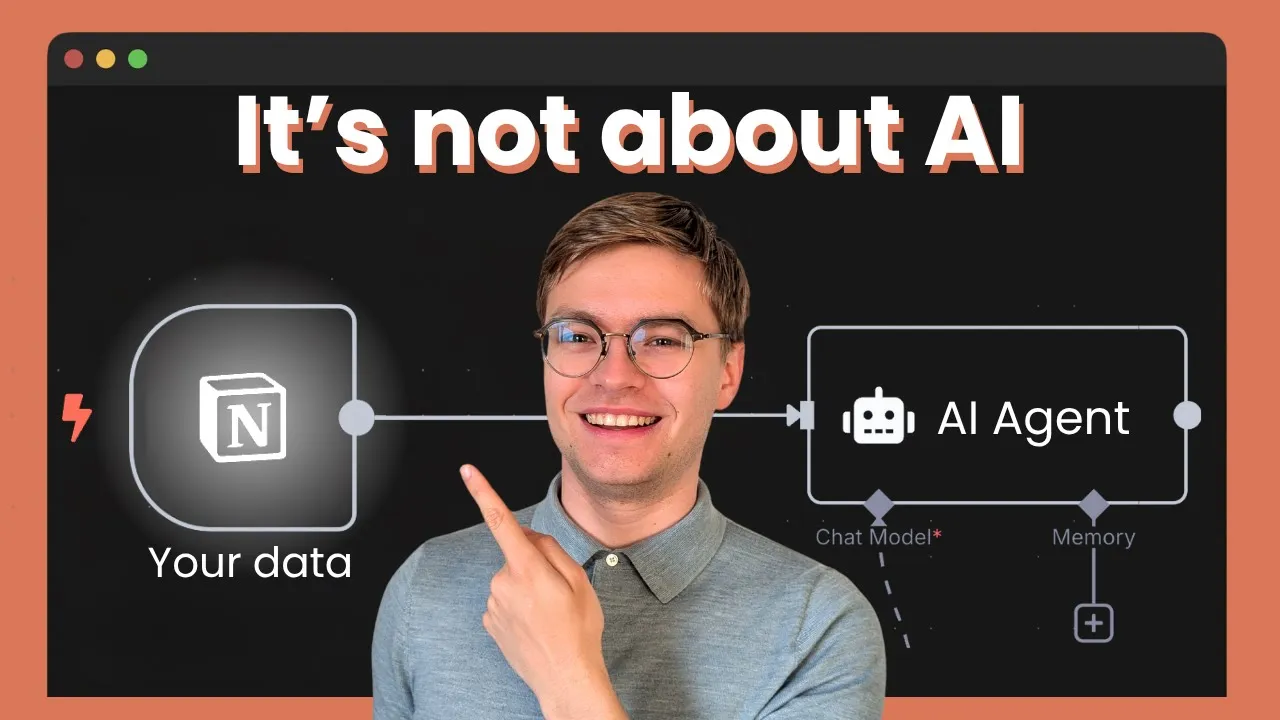No-Code AI Tools vs Python AI Development Finding the Right Build Path
Every AI engineer eventually faces the same decision: stay inside no-code tooling or commit to Python. Through launching production workflows that start in n8n and mature into custom services, I have learned that both approaches play a role at different stages. The key is understanding when visual builders accelerate progress and when Python becomes mandatory for reliability, cost control, and advanced capabilities.
Speed of Experimentation
No-code tools like n8n let you drag connectors, authenticate APIs, and watch end-to-end flows in minutes. They are perfect for validating that an idea works: pull a YouTube transcript, enrich it with key insights, and publish a blog draft without touching a terminal. This rapid iteration keeps stakeholders engaged while you prove the value of a new workflow. Start with Getting Started with n8n for AI Projects if you need a guided setup.
Python requires more setup. You configure environments, manage dependencies, and write explicit HTTP requests. The extra effort pays off when you need deterministic behavior. A Python service can replicate the same transformation every time, unit test each step, and integrate with CI pipelines from day one.
Start with no-code to test ideas quickly, then let Python take over once the workflow becomes mission critical.
Data Quality and Transformation Power
No-code shines when you already own premium data. The n8n automation that turns YouTube transcripts into blogs works because the transcript contains the creator’s expertise. The tool simply orchestrates existing knowledge.
As soon as you must scrub, normalize, or enrich data, Python takes the lead. In the agent cost teardown, raw Playwright outputs returned entire HTML pages that inflated token usage. A simple Python scraper replaced those dumps with concise summaries. That change slashed context size and raised answer quality in one move. I walk through the practical redesign in n8n vs Python Automation Which Workflow Keeps AI Projects Reliable.
Use no-code to route high quality data. Reach for Python when you must reshape information before giving it to the model.
Operational Risk and Cost Control
No-code platforms make it easy to chain multiple AI calls, but they do not warn you when token counts explode. The OpenRouter example showed how four requests and repeated tool outputs climbed to roughly seventy thousand tokens and forty-five cents in seconds. Without custom logic, the workflow accumulated cost every time it ran.
Python scripts keep you close to the raw numbers. You decide what to log, which sections to trim, and when to stop the process. By handling scraping, summarization, and post-processing in code, you guarantee that only the most relevant data reaches your model, protecting budgets along the way.
If cost visibility is fuzzy, migrate the expensive steps into Python where you can monitor every token. The cost breakdown in Hidden Cost of AI Agents shows how quickly toolchains rack up invoices.
Scaling and Team Collaboration
No-code interfaces are approachable. Non-technical collaborators can review the canvas, understand branching logic, and suggest improvements. However, as workflows scale, hidden complexity accumulates in nested nodes, inline JavaScript, and platform-specific behaviors.
Python systems scale with traditional software practices. You can modularize functionality, add observability, and deploy across environments without being tied to a single vendor. When other engineers join the project, they inherit clean repositories instead of navigating crowded visual canvases.
Use no-code to collaborate quickly, then stabilize mature workflows with Python so the team can build on a solid foundation. For a feature-by-feature comparison of orchestration suites, check n8n vs Zapier for AI Workflows.
Practical Selection Guide
- Start with no-code when: you need fast validation, you already own clean data, or stakeholders must see the workflow immediately.
- Invest in Python when: token costs matter, compliance demands audit trails, or you require advanced integrations that exceed what drag-and-drop nodes offer.
- Hybrid approach: keep orchestration and human-friendly monitoring in no-code while delegating heavy processing to Python services exposed as APIs.
Ready to see both approaches in action? Watch the transcript-driven automation demo at https://www.youtube.com/watch?v=fbevy5gWDes and the cost analysis that motivated the Python rewrite at https://www.youtube.com/watch?v=upHMV5QO7h4. If you want guidance on sequencing your own transition, join the AI Engineering community where Senior Software Engineers share playbooks for blending no-code agility with Python robustness.

